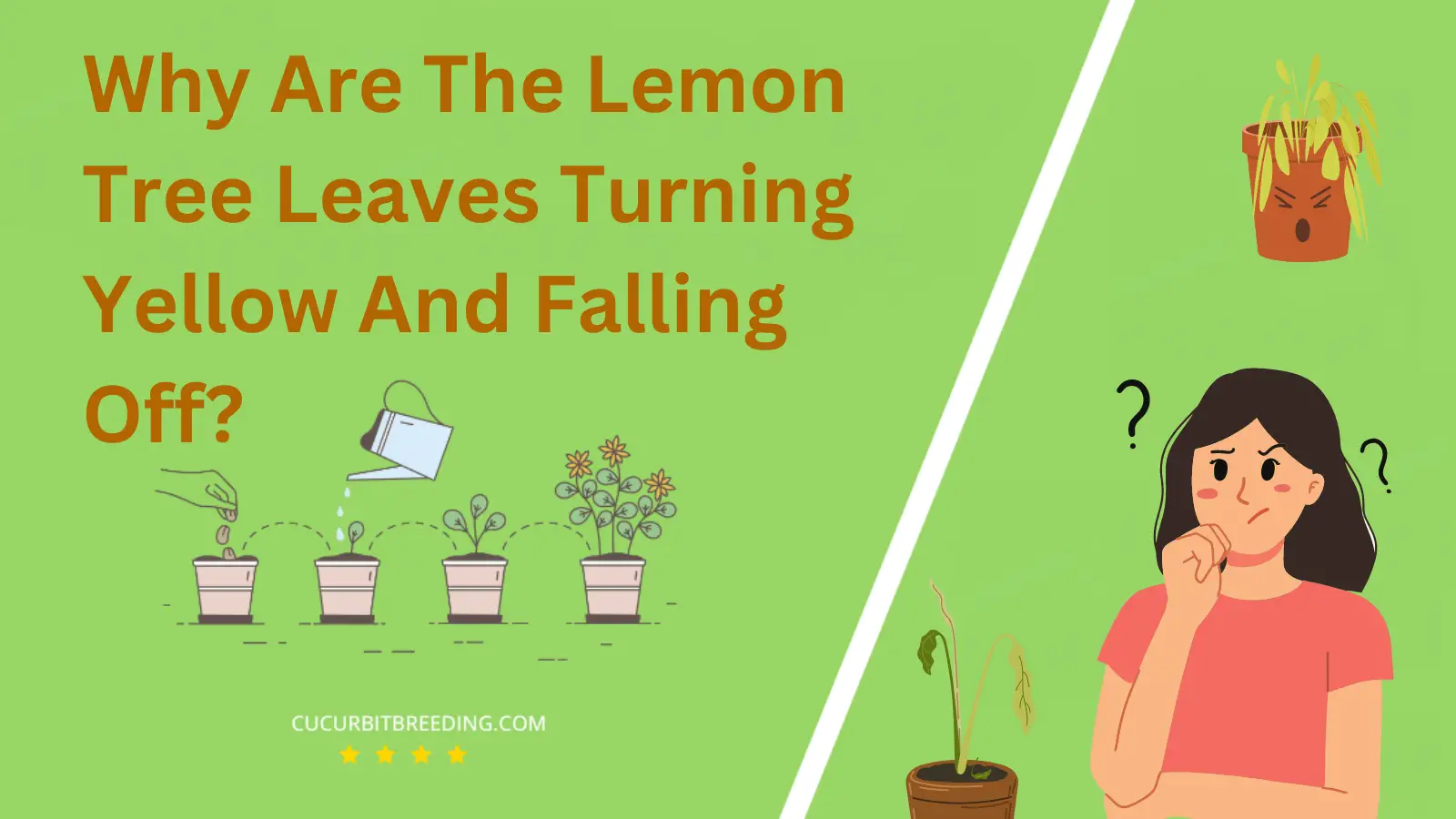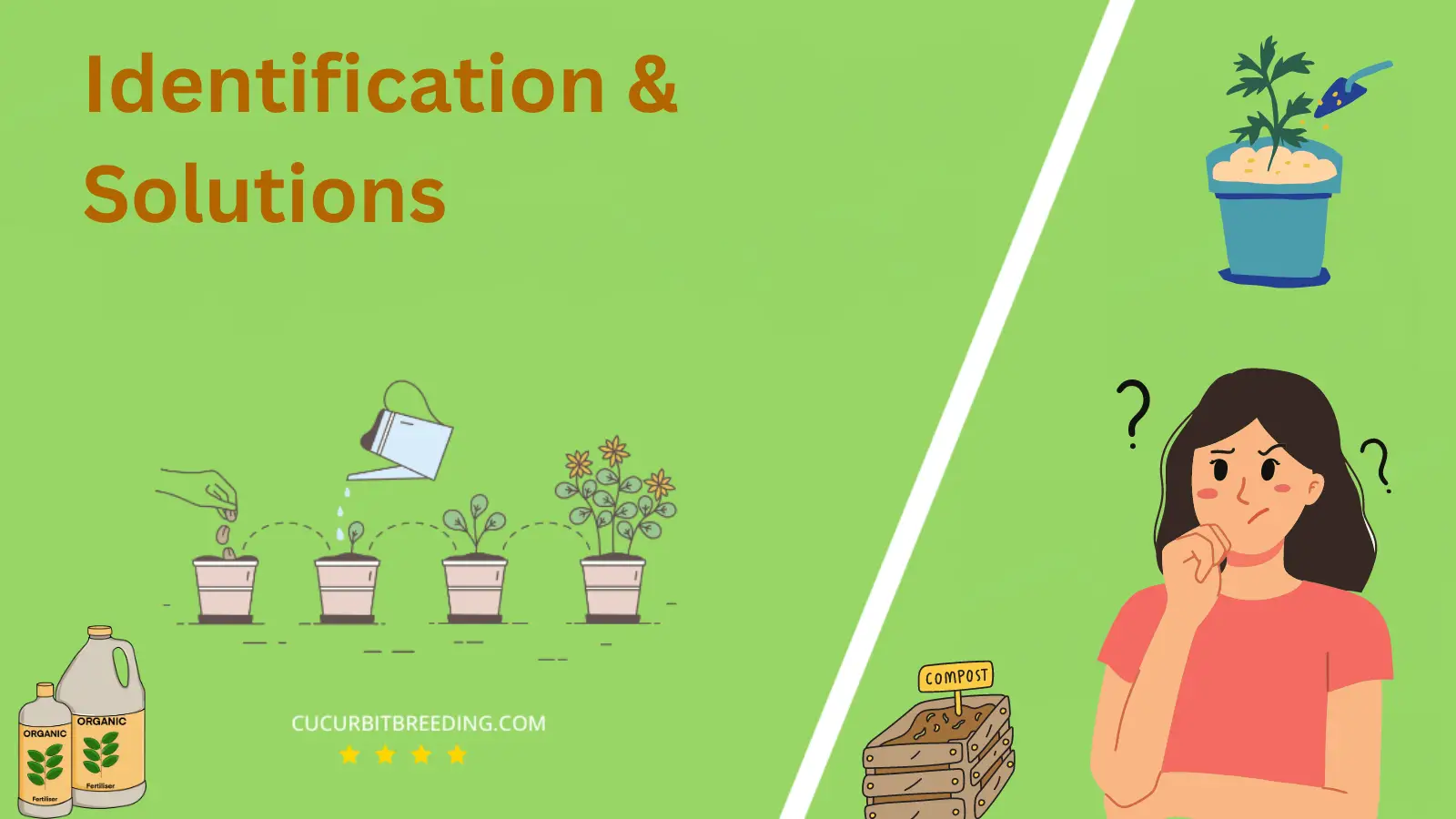
Lemon Tree Leaves Turning Yellow and Falling Off is a common gardener’s conundrum that leaves many puzzled. The allure of vibrant green foliage giving way to yellow hues, followed by an unexpected shedding, can be alarming.
As a gardening puzzle, it threads into the complex tapestry of plant care that expert gardeners like you strive to understand. But what could be causing this change? The suspense thickens as we delve deeper.
Why Are The Lemon Tree Leaves Turning Yellow And Falling Off?
1. Nutrient deficiency
| Description | can cause chlorophyll breakdown, leading to yellowing and leaf drop in lemon trees. |
|---|---|
| Solution | Ensure proper nutrient levels through balanced fertilization and address deficiencies using appropriate supplements. |
When a lemon tree experiences a nutrient deficiency, it can’t perform all of its necessary plant functions correctly. This is often reflected in the health of their leaves which starts turning yellow and potentially falling off. The main deficient nutrients in this case are usually nitrogen, phosphorus, and potassium.
Nitrogen deficiency makes the leaves yellow starting with the older ones as the tree redirects the nitrogen to the new growth. Phosphorus deficit can not only turn older leaves dark but also cause them to fall off. And, a potassium shortage could cause the edges of leaves to appear scorched, eventually leading to yellow leaves.
To correct this, you first need to confirm the nutrient deficiency by testing the soil. Based on the results, you can then add the necessary nutrients lacking in your lemon tree’s soil. Regularly using a balanced citrus fertilizer is usually recommended, as it’s specially formulated for citrus trees’ needs. To enhance nutrients uptake, ensure proper watering regimen; both overwatering and underwatering reduce nutrient absorption.
Also, maintain an appropriate pH level in soil, as an improper pH can limit nutrients availability. For a lemon tree, the soil pH should ideally be between 6.0 and 7.5. You may use sulfur or limestone to lower or raise the soil pH level respectively. Mulching can also help maintain the soil’s nutrient content by reducing water loss and preventing the growth of weeds.
2. Overwatering
| Description | Excess water disrupts root function, reducing nutrient uptake and leading to yellow leaves and leaf drop. |
|---|---|
| Solution | Reduce watering frequency and allow the soil to dry out between waterings to prevent overwatering. |
Overwatering a lemon tree could lead to its leaves turning yellow and falling off. Overwatering issue causes the plant to drown and suffocate as the waterlogged soil restricts oxygen access to the tree’s root system. Over time, this triggers root rot, causing leaves to yellow and fall.
Corrective measures include reducing the watering frequency and ensuring your tree is planted in well-draining soil. Only water when the top few inches of soil are dry to touch. Using a moisture meter can help gauge when your plant needs water. Remember, it’s safer to underwater than overwater, especially for citrus trees.
Preventive measures to avoid overwatering include proper planting site selection and soil preparation. Consider a raised bed if your garden is in a low-lying area that tends to hold water. Adding compost to the planting site can improve soil drainage. Regularly check the water demands of your lemon tree as they vary with seasonal changes. These steps should enable the tree to bounce back to health.
3. Lack of sunlight
| Description | The lack of sunlight causes a decrease in chlorophyll production, resulting in yellowing and leaf drop. |
|---|---|
| Solution | Increase exposure to sunlight to prevent yellowing and falling of leaves. |
Lack of sunlight can cause the lemon tree’s leaves to turn yellow and fall off. Sunlight is vital for the process of photosynthesis that helps plants to produce food. Lemon trees specifically, as citrus trees, require a lot of sunlight.
To resolve this issue, move your lemon tree to a brighter spot where it can receive at least 8-12 hours of sunlight daily. If you’re keeping the plant indoors, you might want to invest in a grow light. Remember to avoid sudden changes in light intensity, which could shock the plant.
Lastly, keep in check the health of your tree. Regularly inspect for pests and diseases and treat them as soon as they appear. A healthy lemon tree is more resilient to light stress and likely to survive even when sunlight might not be optimal.
4. Pest infestation
| Description | The lack of sunlight causes a decrease in chlorophyll production, resulting in yellowing and leaf drop. |
|---|---|
| Solution | Increase exposure to sunlight to prevent yellowing and falling of leaves. |
If a lemon tree’s leaves are turning yellow and falling off, it could be due to a pest infestation. Pests such as citrus mites, whiteflies, aphids, or scale insects can play a significant role in this. These pests not only suck the sap out of the plant, leading to the yellowing and dropping of leaves, but they also produce a sticky substance called honeydew, inviting black mold growth which impedes the plant’s capacity to perform photosynthesis and hence resulting in the yellowing of leaves.
To manage pest infestations, it’s crucial to regularly inspect your lemon tree for any signs of pests and take action immediately if you notice any. Actions include physically removing the pests or utilizing a horticultural soap spray that is non-toxic to beneficial insects and animals. If the infestation is severe, you might need to use an appropriate pesticide, following the safety guidelines outlined by the manufacturer.
Additionally, to prevent future infestations, keep the area around your lemon tree clean and free of debris as it can serve as a breeding ground for pests. Other preventive measures could include encouraging the presence of beneficial insects that could act as natural predators to these pests or rotating bug-repellent plants around the tree.

5. Disease
| Description | Increase exposure to sunlight to prevent yellowing and falling of leaves. |
|---|---|
| Solution | Check for nutrient deficiency and adjust watering schedule to prevent over or under watering. |
Yellowing and falling leaves on a lemon tree might indicate the tree is suffering from disease. Certain diseases like citrus greening, citrus canker, and root rot can cause these symptoms. Citrus greening is a bacterial disease that causes yellowing leaves and fruit drop. Citrus canker creates corky lesions on the leaves causing them to yellow and drop. Root rot, often caused by overwatering, leads to yellowing leaves as the root system is damaged, limiting nutrient intake.
To combat these diseases, first, you have to accurately diagnose the specific disease. You should closely inspect the tree for symptoms and it may be advisable to take a sample to a local agricultural extension office. Once diagnosed, specific treatment can begin. For citrus greening, there are no effective treatments, and it is recommended to remove and destroy the affected tree to prevent spread. For citrus canker, copper sprays can help control the spread. For root rot, adjusting watering practices and treating with a fungicide can aid recovery.
Prevention is also an important aspect of disease control. Ensuring your tree is planted in well-draining soil, spaced properly from other trees and under proper sanitation practices can help prevent disease onset in the first place.
6. Soil pH imbalance
| Description | causes nutrient deficiencies, affecting chlorophyll production, leading to yellowing and leaf drop. |
|---|---|
| Solution | Adjust soil pH with appropriate amendments to restore balance and prevent yellowing and leaf drop. |
Lemon trees are sensitive to the pH levels of the soil in which they are planted. Incorrect soil pH can lead to a condition known as Chlorosis, which manifests as yellowing leaves and leaf drop. This is because the tree struggles to uptake and utilise essential nutrients from the soil when the pH value is out of its preferred range of 6.0 to 7.5.
Solution includes testing the soil’s pH level using a home testing kit or sending a sample to a local extension service for accurate results. If the pH is too high or too low, amendments can be added to the soil. For acidic soil, add garden lime. Alternatively, for soil that’s too alkaline, use sulfur or acidifying fertilizers to lower the pH. Don’t forget to water the tree adequately after adding any amendments. It’s important to maintain the pH at an optimal level for the overall health and productivity of your lemon tree.
7. Environmental stress
| Description | causes chlorophyll breakdown, leading to yellow coloration due to reduced photosynthesis and nutrient deficiency. |
|---|---|
| Solution | Provide adequate water, nutrients, and temperature control to mitigate environmental stress on the plant. |
One of the main reasons why the leaves of your lemon tree are turning yellow and falling off could be due to insufficient watering or poor drainage. The lemon tree, like most citrus plants, requires adequate watering to survive. Insufficient watering can cause the leaves to dehydrate, become yellow, and ultimately fall off the tree. Likewise, if the soil in which the tree is planted does not have a good drainage system, it could lead to waterlogging, which in turn could cause root rot. This condition would also lead to the yellowing and falling off of the leaves.
To rectify this situation, implement a proper watering schedule. It’s crucial to water generously every week or so, depending on the weather, until the tree becomes well established. However, avoid overwatering as it could result in waterlogging. Additionally, you should improve the soil drainage through the incorporation of organic matter or sand.
You might also need to monitor the tree for signs of disease or pest infestation, which could further exacerbate the yellow leaf issue. Early detection would make it easier to manage these threats. Use eco-friendly fungicides or pesticides to curb the activity of disease-causing pathogens or pests, but only after correctly identifying the cause.